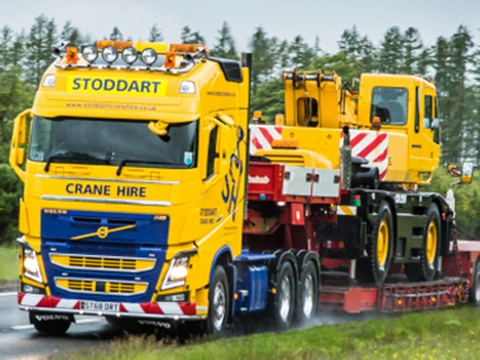How to Choose the Right Crane for Your Project

When it comes to construction and industrial projects, having the right crane can significantly impact efficiency, safety, and overall project success. Whether building a residential complex, a commercial building, or managing an infrastructure project, selecting the appropriate crane is crucial.
In this blog, we will discuss the key factors to consider when choosing the right crane for your project.
-
Understand Your Project Requirements: Before selecting a crane for your project, it is crucial to assess its specific requirements. Consider aspects such as the weight and size of the materials to be lifted, the necessary height and reach, and the working conditions. By evaluating these aspects, you can determine the right size and type of crane best suited for your needs.
-
Types of Cranes: There are numerous types of cranes available, each designed for specific tasks and environments:
-
Tower Cranes: Ideal for tall buildings and urban construction projects.
-
Mobile Cranes: Versatile and easy to move, suitable for various projects.
-
Crawler Cranes: Known for their stability and heavy-lifting capacity.
-
Rough Terrain Cranes: Perfect for uneven or rugged job sites.
-
All-Terrain Cranes: Combine the versatility of mobile and rough terrain cranes.
-
-
Lifting Capacity: Determine the maximum weight you require to lift and choose a crane with an appropriate lifting capacity. Selecting a crane that can handle the heaviest loads without compromising safety is vital.
-
Reach and Height: Consider the maximum height and reach required for your project. This will help you narrow your options and choose a crane to meet your project’s demands.
-
Job Site Conditions: Evaluate the site conditions, including ground stability, space constraints, and potential obstacles. For example, a crawler crane may be suitable for soft or uneven ground, while a mobile crane may be better for tight spaces.
-
Safety Features: Safety must be prioritised by selecting a crane with modern safety features such as load monitoring systems, anti-collision devices, and emergency brakes. Proper maintenance and inspection of cranes also play a significant role in ensuring a safe working environment.
-
Rental vs. Purchase: Based on the duration and scale of your project, decide whether to rent or purchase a crane. Renting can be profitable for short-term projects, while purchasing may be more practical for long-term or ongoing projects.
-
Operator Expertise: Ensure you have qualified and experienced crane operators on your team. Proper training and certification are essential for safe and efficient crane operation.
-
Maintenance and Support: Consider the maintenance requirements of the crane you choose. Regular inspections and servicing are crucial for safe and reliable operation. Partnering with a reputable supplier can provide access to maintenance support and spare parts.
-
Budget Considerations: When choosing a crane, consider your budget. Balance cost with quality and performance to find the best value for your project.
In conclusion, choosing the right crane for your project is vital for ensuring smooth operations and successful project outcomes. You can make an informed decision that aligns with your goals by evaluating your project’s specific needs, considering different crane types, and prioritising safety and efficiency. When you need professional support, partnering with a reputable crane hire company like Stoddart Crane Hire can provide access to the equipment and expertise required to execute your project safely and effectively.

